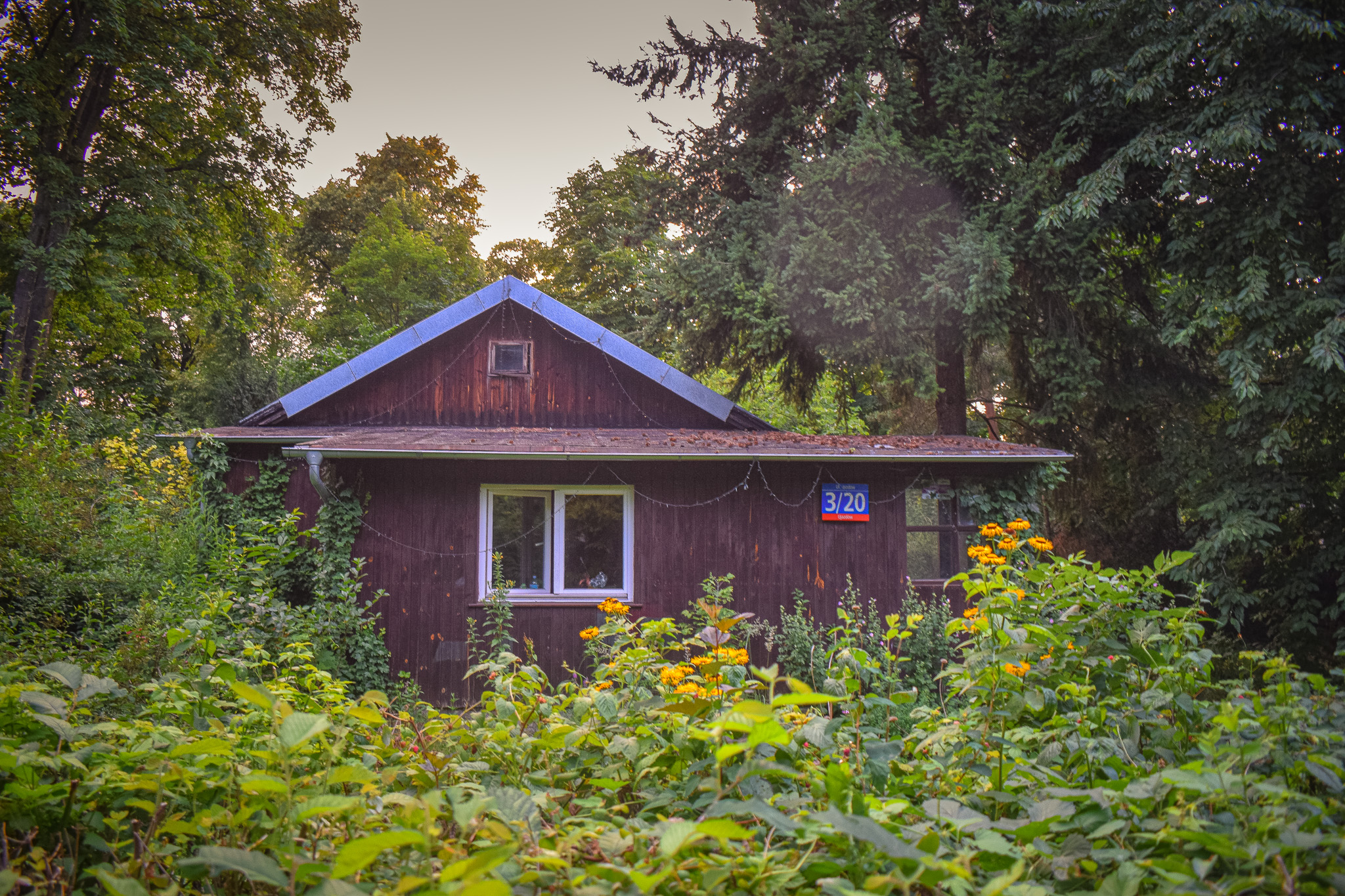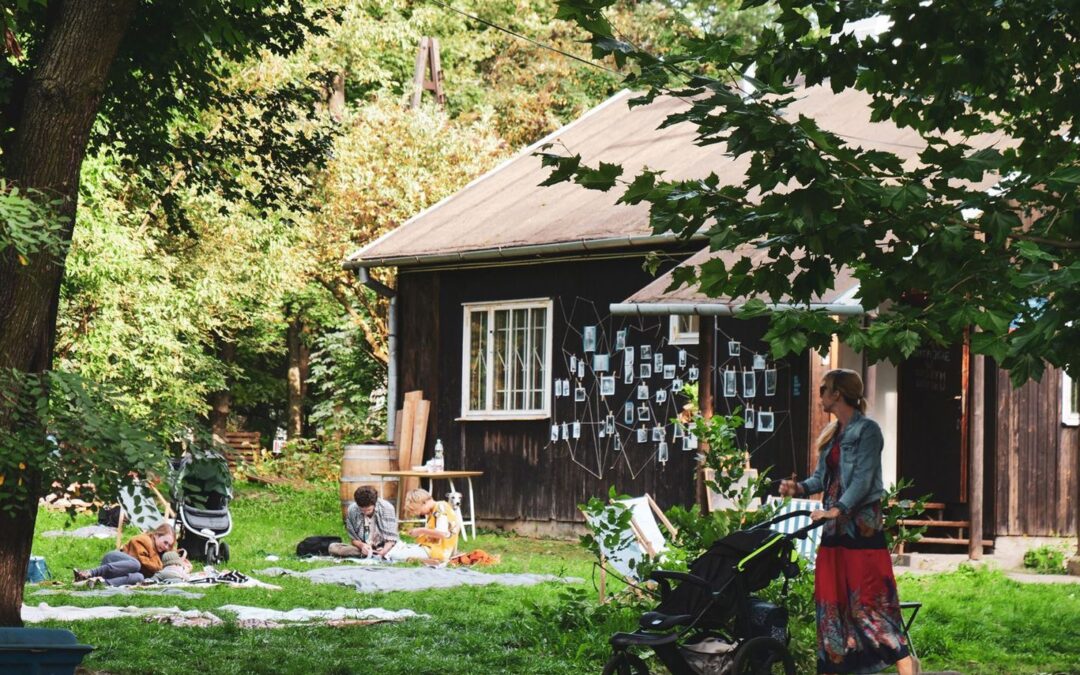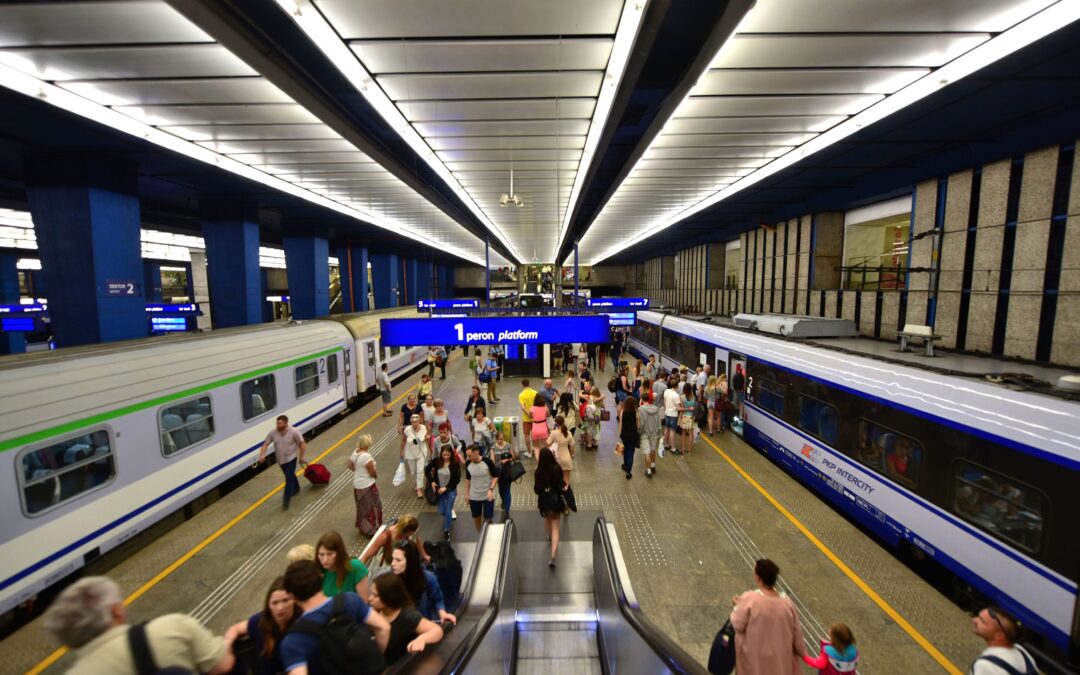By Alex Webber
One of Warsaw’s most unusual neighbourhoods – a small, green enclave of wooden Finnish houses erected in the wake of World War Two – once again finds its future in the balance, with activists warning that the city wants to squeeze out residents and gentrify the area.
Walking around Osiedle Jazdów is an extraordinary experience.
Grid-like in its layout, its leafy alleys come lined with quaint cottages topped with black tar roofs. Were it not for the distant hum of traffic, visitors would think they were strolling through a rustic village deep in Poland’s wilds. It is remarkable to think that such a place can exist at the heart of a major European city.
Officially inaugurated on 2 August 1945, this pocket-sized district initially consisted of approximately ninety wooden cabins that had been seized by the Soviets as war reparations from Finland. Gifted to Poland, the origin of these cottage-style structures saw the area nicknamed Osiedle Fińskich Domków (the Finnish Houses Estate).

Osiedle Jazdów and its “Finnish houses” in 1945-47, shortly after they were erected (source: NAC)
First occupied by senior officials, engineers and architects working for the capital’s reconstruction bureau, these civil servants were joined by their families. Within months, surviving outbuildings that once formed part of Ujazdowski Hospital were transformed to house facilities such as a primary school and kindergarten for the new community.
Already, a self-contained world was emerging, a point underscored by the tapping of a water well and the introduction of a kiosk and grocery store. In winter, residents even created a toboggan run and ice rink.
Life thrived and, while the cabins had always been seen as a temporary solution, Warsaw’s post-war housing shortage ensured they survived well past their ten-year life expectancy.
Located just a stone’s throw from parliament, as well as numerous other government institutions and foreign embassies, the prestigious central location saw several houses demolished in the 1960s to make way for the French embassy. Soon after, yet more houses were dismantled to allow for the construction of the Trasa Łazienkowska highway.
In 1972, local authorities announced an intention to demolish the entire area. Fortunately, this did not come to pass after wider plans to develop the district were shelved.
Despite Osiedle Jazdów’s shrinking footprint, it had energy in abundance. This was largely attributed to the influx of artists and other creatives that had sought to live there once the civil servants began to leave.
Residents included the singer and satirist Jan Pietrzak, actress Barbara Wrzesińska, and Jonasz Kofta, a poet whose primary claim to fame lay in opening Hybrydy, a 1960s jazz club known for its free-spirited hedonism.
But if ever a single event served to define the area’s Bohemian character, that was to come in 1981. Marking the first anniversary of John Lennon’s assassination, Beatles fans converged on St Anne’s Church by the Old Town, where they listened to a priest play “Let It Be” on the guitar.
Afterwards, around 150 people marched down Warsaw’s Royal Route, first stopping at the British embassy before concluding their procession at Osiedle Jazdów. Here, under a haze of marijuana smoke, they sang “Give Peace A Chance”.
Gathered on a previously unnamed alleyway, one of those in attendance hung a homemade placard from a fence to christen it Ulica Johna Lennona (John Lennon Street). With the introduction of martial law just days away, the evening offered a chink of hope amidst the prevailing sense of pessimism.

One of Osiedle Jazdów’s Finnish houses today (credit: Alex Webber)
A decade on, much had changed, and in 1991 the city’s postcommunist leaders made the street name official. However, those thinking this would usher in a new dawn would be disappointed. Yet more houses were torn down to accommodate a new German embassy, while others simply fell into disrepair.
Then, in 2011, city hall sparked outrage after outlining a plan to erase this micro-district altogether.
Meeting fierce resistance from residents, it was from this ensuing campaign to save the houses that the Otwarty Jazdów (Open Jazdów) initiative was established in 2013. Striving to strengthen the community, the organisation has been at the vanguard of actions to safeguard the estate.
“One of our problems is the location,” says Gabriela Stępniak, a volunteer coordinator at Otwarty Jazdów. “We’re right in the heart of the city next to two famous parks and close to parliament, so the value of the land is enormous.”
While her organisation has succeeded so far in saving what remains of Osiedle Jazdów from developers, there is now a sense of mounting frustration among campaigners after the start of the year brought with it news of a revamped draft development plan for the area.
While this would guarantee the future of the remaining houses, they would no longer serve a residential function, with current residents allowed to remain but no new ones able to move in. Moreover, city hall revealed plans to potentially allow businesses to operate in the area.
Activists have raised concern about development plans for a historic estate of wooden so-called "Finnish cottages" in Warsaw.
They say the proposals would mean residents can no longer live there and would result in the "destruction of cultural heritage" https://t.co/7yaE2zftdQ
— Notes from Poland 🇵🇱 (@notesfrompoland) January 8, 2024
Fearing gentrification amid the appearance of fancy bars and restaurants, activists responded with fury.
Writing for Miasto Jest Nasze (The City is Ours), an activist group dedicated to protecting and improving Warsaw for its residents, its founder Jan Mencwel issued a rallying cry: “These houses must be defended again – this time not from demolition, but from the destruction of their character.”
“Once again we find ourselves trying to reach an agreement with the city,” says Stępniak, noting that her group last month protested outside city hall and presented an initiative “aimed at finding a middle ground” by allowing co-management of the estate and dividing responsibilities in a more coherent manner.
But she doubts the proposal will be accepted by the municipal authorities. “The city wants to change things here,” she continues. “From their perspective, it’s easier if they just controll the decision-making process rather than having to reach agreements with us.”
One of Kraków's most popular culture and nightlife hubs – situated in a former tobacco factory – has been forced to close by the developer that owns the site.
Filling the gap it leaves behind will be a major challenge for the city, writes @makowski_m https://t.co/HyST8MUlgD
— Notes from Poland 🇵🇱 (@notesfrompoland) September 18, 2020
Warsaw’s mayor, Rafał Trzaskowski, insists that the city’s plans do not threaten the area’s character.
“I said that Jazdów will be defended and Jazdów is defended,” said Trzaskowski in late March. “The local plan clearly states that its character will not be changed and I have said this many times. There is no threat to Jazdów at the moment.”
Yet such language stops short of the kind of assurances that locals are seeking.
“A lot of politicians try to persuade us that they care about us, but it’s starting to appear that all their words have just been for their own political gain,” says Stępniak.
“A few years ago, ahead of the [previous] mayoral elections, we were promised that we would be high on Rafał Trzaskowski’s list of priorities and that we would enjoy protection. But what’s really changed?”
Trzaskowski, who was standing for a second term in office at local elections on Sunday 7 April, argues that it in the district’s interests for the city to retain management of the area, so that it can balance the interests of residents and the many NGOs that now operate in Jazdów.
“We cannot [hand over management of the estate],” said the mayor. “There are too many conflicting interests present. Those who live there often have completely different interests to the NGOs.”
His remarks point to the fact that Osiedle Jazdów is no longer primarily a residential area. Currently, only six families are living there, says Stępniak. The remaining buildings are largely occupied by various social and cultural organisations.
These include one of the country’s most high-profile urban apiaries, an “Embassy for Traditional Music”, a food-sharing point, a light therapy room, as well as a number of ecological and educational workshops. They host a rich array of events, such as over-50s nights, dance classes, concerts, debates, film screenings and so forth.
“You could call this a laboratory for social and cultural practices,” says Stępniak. “What defines Osiedle Jazdów is the community spirit. Although the area is composed of independent cultural bodies, we try to make every decision together. It’s a real collaborative effort and, in my opinion, it is this model of cooperation that is the district’s most valuable asset.”
How long this will remain the case rests with the city’s decision-makers. Stępniak and others at Otwarty Jazdów remain unfazed by the challenges ahead.
“Working here, and having endured so many controversies previously, you have to be an optimist,” she says. “But, of course, there is a sense of ‘here we go again’. This is not the first time we’ve been called into action.”
The activists see their work trying to preserve this unique neighbourhood as not just local activism, but something of much broader relevance. “Osiedle Jazdów is important not just to Warsaw, but to Poland. We need to start thinking of it as belonging to our national heritage,” says Stępniak.

Notes from Poland is run by a small editorial team and published by an independent, non-profit foundation that is funded through donations from our readers. We cannot do what we do without your support.
Main image credit: Urząd Miasta (press materials)




















